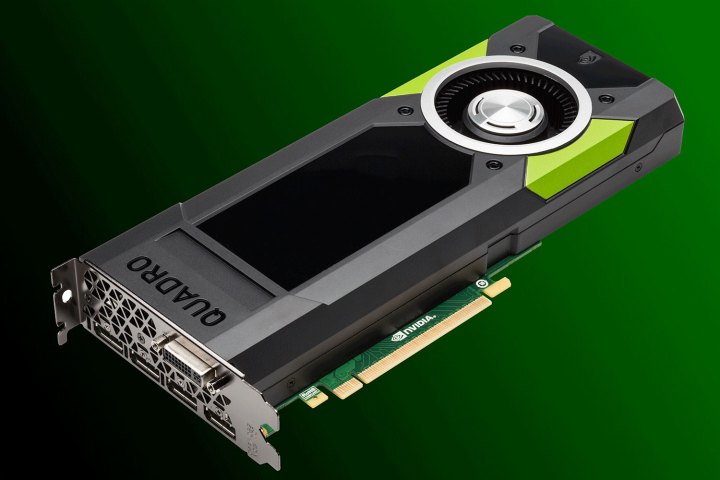
With the exception of the now sky-high memory, not much has changed since the previous M6000 card, which packed in “just” 12GB of memory. The GPU at the heart of the card is still Nvidia’s Maxwell 2-based GM200 chip, which boasts an 1,140MHz max boost clock, and both cards utilize 6.6Gbps GDDR5 memory. It also includes four DisplayPort plugs and one DVI output, dropping the HDMI usually found on GTX cards.
Before you get excited and start planning a new gaming rig around the beastly graphics card, it’s important to note these professional level cards aren’t meant for Rocket League marathons or maxing out your frames per second in The Division.
Instead, the cards are specifically engineered for non-gaming purposes, many of which run much better on the processing structure found in a GPU than a traditional CPU. That could mean graphical work like CAD and rendering, but also extends to weather prediction, facial recognition, and Bitcoin mining. They’re also typically equipped with certified drivers that ensure complete compatibility with high-end rendering and 3D modeling software suites.
In this case, the card also ships with more controls over thermals and clock speeds than are found even on the 12GB model. Since it’s the same construction, it’s likely just a firmware update, and although Nvidia doesn’t specify, it may be one that comes to other cards in the family later.
Like the 12GB M6000, the new 24GB version will cost a healthy $5,000 a pop. That places it well out of reach of your average PC gamer, and firmly in the hands of professionals and developers. It’s already available through Nvidia suppliers, and replaces the 12GB version, which is no longer listed on Nvidia’s Quadro page.



